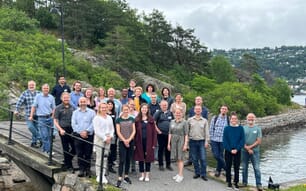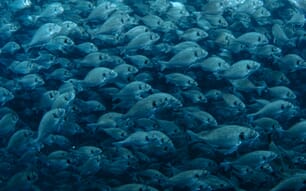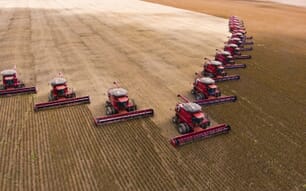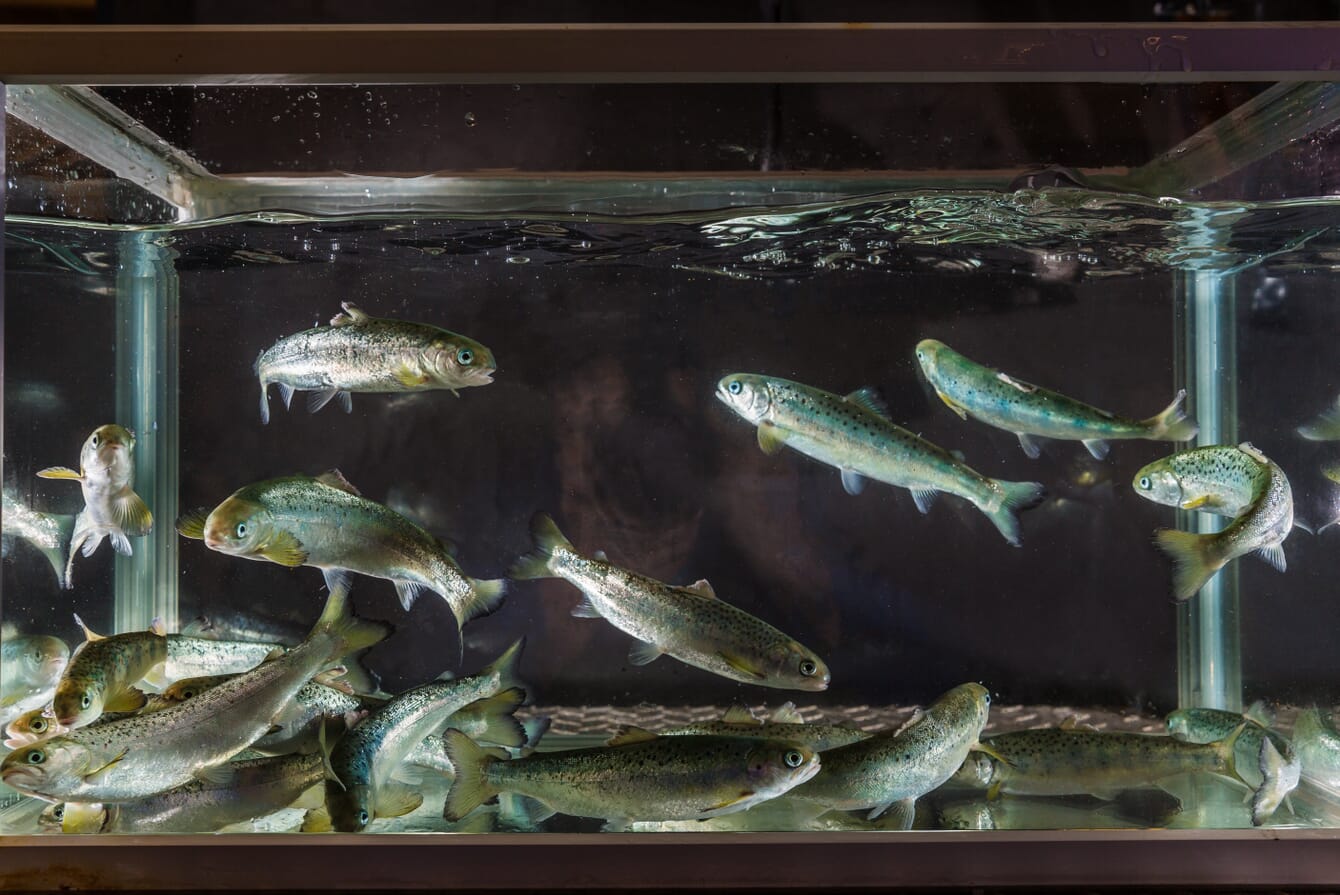
© Terje Aamodt, Nofima
Global production of Atlantic salmon (Salmo salar) experienced an extraordinary growth rate of 900 percent in the last three decades but now seems to have now stabilised at a total production volume of around the 2.4 million tonnes per year. The lack of suitable areas available to expand sea-cage production and the biological constrains caused by pathogens are shifting thousands of tonnes of salmon production to alternative systems.
In the research project RASHealth one of the aims are to document the effect peracetic acid (PAA) has on salmon health, welfare and growth, and to evaluate two methods of adding this disinfectant to the water. So far, the results are promising.
Recirculating aquaculture systems (RAS) are among the most environmentally sustainable systems to culture fish – due to their reduced water usage, their minimization of nutrient run-off to the environment and the extreme difficulty of fish successfully escaping from them.
Despite the high biosecurity features in RAS, pathogen outbreaks in parr and smolt have accounted for several mass mortality events. Yersinia ruckeri and Ca. Branchiomonas cysticola are among the major pathogens that pose a significant health challenge to Atlantic salmon production in freshwater RAS.
To control water-borne pathogens without negatively affecting the fish or the biofilter bacteria is challenging, and strategies applied in flow-through systems are usually not applicable in RAS.
Moreover, the re-use of water which characterises RAS leads to the accumulation of substances, such as dissolved solids and ammonia, in the water. This imposes restrictions to the efficiency of disinfection strategies. The disinfection strategy needs also to consider that the biological filtration unit depends on specific bacterial species to convert a toxic fish metabolite (ammonia) to a less toxic form (nitrate), and these beneficial bacteria should not be severely impacted by the disinfection protocol.
Disinfection solutions developed for RAS can be categorised as either continuous or periodic. Continuous water disinfections include the use of ozone (O3) and UV irradiance in the full flow of RAS. Ozone is a powerful oxidant agent that is used to improve water quality and reduce pathogens in aquaculture. However, its application needs a complex understanding of water chemistry and an effective way to monitor and control the ozone system. Periodic disinfection typically comprises of chemical disinfectants – such as formalin, copper sulphate, chloramine-T, hydrogen peroxide (H2O2) and peracetic acid.
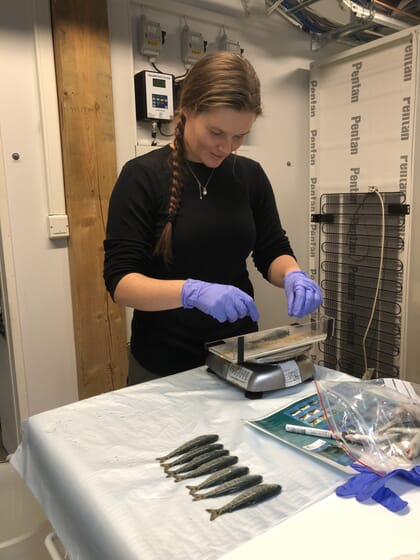
© Nofima
There is a high regard for peracetic acid-based products as periodic disinfectants in RAS because of the low risk of bioaccumulation, fast degradation with neutral residuals and minimal impact on biofilter performance. However, the no-observed-effect concentration in Atlantic salmon parr was unknown. The present study evaluated the effect of acute peracetic acid exposure on Atlantic salmon parr health and welfare by evaluating survival, swimming behaviour, appetite and histopathological alterations in the gills and skin.
Fish were exposed to the target PAA concentration in a static system for 1 hour and the exposure protocol was repeated after a 52-hour recovery period. The fish survival on low doses of PAA was 100 percent.
Fish swimming behavior was normal in PAA lower than 1.6 mg/L, whereas it become erratic – with air gasping recorded – when the PAA level exceeded 3.2 mg/L. Fish appetite did not change among the different PAA treatment groups. Skin and gill histopathological alterations were pronounced in PAA concentration of more than 3.2 mg/L, and these were characterised by poorer skin conditions and necrotic gill lamella.
In conclusion, the current study identified the no-observed-effect concentration for acute PAA exposure to be below 1.6 mg/L for Atlantic salmon parr and provided insights into its use as a prophylactic water disinfectant in RAS facilities. The toxicity of PAA-based disinfectants are influenced by its acidified nature, which can interfere with the pH of the water low alkalinity aquaculture systems.
Further studies should evaluate the health and welfare consequences of a long-term PAA exposure in Atlantic salmon parr.
To sum up:
- Atlantic salmon parr were exposed to nine peracetic acid (PAA) doses (0 – 6.4 mg/L).
- Survival, swimming behaviour and mucosal health were not affected below 1.6 mg/L.
- Acute mortality, damaged skin and gill necrosis were observed in high PAA doses.
- PAA toxicity in low water alkalinity aquaculture systems should be considered.
This work was funded by the Research Council of Norway, Young Research Talent Program, project nr 302767 - Water disinfection strategies to improve Atlantic salmon parr production.
In collaboration with the Technical University of Denmark (Senior scientist Lars-Flemming Pedersen) and the NTNU Department of Chemistry (Associated Professor Alexandros Asimakopoulos).

